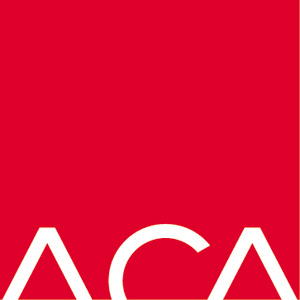ACA Pulse Check 2025 – Tasmanian Insights
Tasmanian respondents to the ACA Pulse Check gave a clear picture of the challenges in our smallest state. While Tasmanian practices demonstrate adaptability through pivoting business models, flexible work and strengthening internal support systems, the profession remains vulnerable to unpredictable pipelines, unsustainable fee structures, and lack of access to larger-scale public projects. A recurring theme is that small, committed practices are being squeezed – by government procurement settings, developer expectations, and rising operating costs.
THE NUMBERS
The 2025 ACA Pulse Check offers insights from 10 architectural practices across Tasmania, highlighting the realities of a sector dominated by small, regionally diverse firms. All respondents are locally based, with 60% operating in capital city areas and 40% in regional settings. The respondent group reflects a balance between established and emerging practices; 60% have been operating for over 11 years, while 40% are newer entrants. Practice size remains consistently small, with all firms employing 1–20 people. Notably, practice size has remained stable from pre-COVID levels.
WHAT REALLY STOOD OUT FOR US …
While small Tasmanian practices demonstrate adaptability through flexible work models and internal support systems, the profession remains vulnerable to unpredictable pipelines, unsustainable fee structures, and lack of access to larger-scale public projects. A recurring theme is that small, committed practices are being squeezed – by government procurement settings, developer expectations, and rising operating costs. Yet within that, there’s innovation – some are pivoting their business models, while others are showing leadership in workplace wellbeing.
FIVE KEY TAKEAWAYS FROM TASMANIA
1. Workflows are patchy and precarious
Half of respondents say their practice is “a little” or “very” quiet, with 75% reporting pipelines of less than three months. One long-standing practice is winding down entirely due to fee pressures and quality concerns.
“We’re closing down a great 40-year-old practice due to low-quality, low-fee bidding.”
2. Revenue declines are common
80% of respondents report revenue decreases in the last six months, with multiple practices citing drops of more than 30%. Fee pressure, project delays and escalating delivery costs are driving profitability down.
“Overheads and expectations are up – fees are not.”
3. Staffing and retention are tense
Most practices are small (1–5 people), and staffing remains a critical issue. While 50% hired staff in the past year (mainly mid-career practitioners), others let staff go due to project shortfalls. Finding the right people at sustainable pay levels is a key concern.
“Quality staff demand pay we can’t afford with current fees.”
4. Wellbeing and flexibility are core values
All surveyed practices offer flexible work – via hybrid models, part-time roles, and job sharing. Wellbeing support is strong, with most teams running informal check-ins and structured initiatives, though burnout risk remains, especially for directors.
“Directors face high risk for low reward, especially in regional markets.”
5. Small practices are shut out of government work
Multiple firms report being effectively excluded from government projects due to restrictive prequalification processes. Competitive pressures from interstate firms and limited opportunities for growth add to the frustration.
“The Government project system locks out small, capable firms.”
FURTHER INSIGHTS
What did the Tasmanian Pulse Check reveal about staffing?
- 50% of practices hired in the past year, primarily mid-career staff
- 60% either let staff go or expect they may need to soon
- Issues include: difficulty affording the right staff; skill gaps in graduates; leadership burnout; exhaustion and missed mentoring in hybrid setups.
What’s happening with revenue?
- 80% of firms reported falling revenue – some by more than 30%
- Common drivers include project delays and cancellations; fee underbidding and rising delivery costs; developer and client price expectations misaligned with service value; and difficulty maintaining profitability despite lean operations.
“Clients want more for less – and often don’t understand what architects really provide.”
What positive developments are we seeing?
- 100% of respondents offer flexible work arrangements. Popular options include remote work and hybrid teams, nine-day fortnights, job sharing, and time-in-lieu.
- Many prioritise scheduled wellbeing check-ins and social activities
- Some practices pivoted into building and development; developed internal systems to streamline delivery; and used COVID disruption to review business models.
What challenges are most pressing?
- Work insecurity and unpredictable pipelines
- Delayed or cancelled projects
- Access to government work and procurement fairness
- Cost escalation in salaries, insurance, and service delivery
- Fee pressure from clients and competing practices
- Declining quality in upstream documentation (planners, engineers).
What ACA resources are most valued by Tasmanian members?
- Reliable information and expert advice
- Templates and tools for contracts and practice management
- Mental wellbeing resources and the ACA EAP
- Advocacy for better procurement and fee reform
- Events that offer practical knowledge, not product placement.
“ACA is leading the charge on procurement, fairness, and sustainability of the profession.”
How the ACA will use these insights
Insights from Tasmania will inform ACA’s ongoing work across:
- Advocacy for equitable procurement and fee reform
- Support for small and regional practices
- Resources on practice management/leadership, resilience, and wellbeing
- Flexible work models tailored for small teams
- Guides and case studies to support innovation and system improvements.
